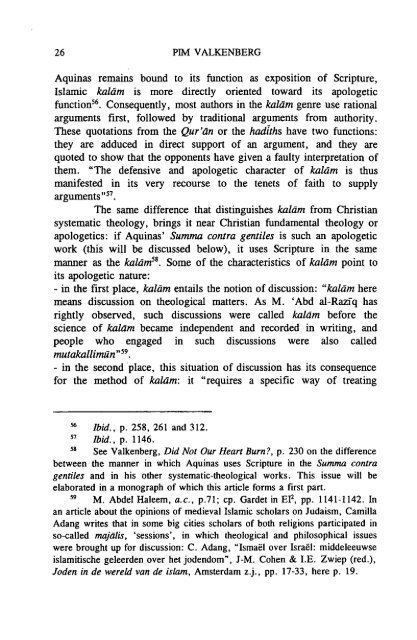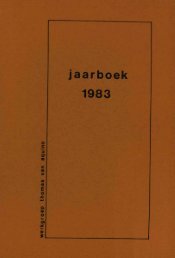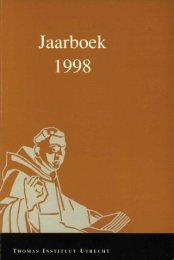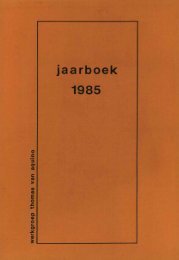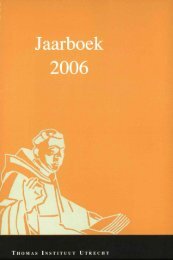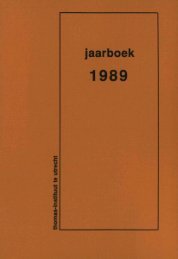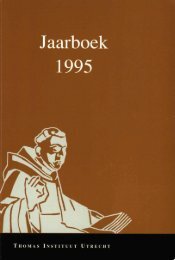Jaarboek Thomas Instituut 1997 - Thomas Instituut te Utrecht
Jaarboek Thomas Instituut 1997 - Thomas Instituut te Utrecht
Jaarboek Thomas Instituut 1997 - Thomas Instituut te Utrecht
Create successful ePaper yourself
Turn your PDF publications into a flip-book with our unique Google optimized e-Paper software.
26 PIM VALKENBERG<br />
Aquinas remains bound to its function as exposition of Scripture,<br />
Islamic kaläm is more directly orien<strong>te</strong>d toward its apologetic<br />
function". Consequently, most authors in the kaläm genre use rational<br />
arguments first, followed by traditional arguments from authority.<br />
These quotations from the Qur'ûn or the hadlths have two functions:<br />
they are adduced in direct support of an argument, and they are<br />
quo<strong>te</strong>d to show that the opponents have given a faulty in<strong>te</strong>rpretation of<br />
them. "The defensive and apologetic charac<strong>te</strong>r of kaläm is thus<br />
manifes<strong>te</strong>d in its very recourse to the <strong>te</strong>nets of faith to supply<br />
arguments" 57 •<br />
The same difference that distinguishes kaläm from Christian<br />
sys<strong>te</strong>matic theology, brings it near Christian fundamental theology or<br />
apologetics: if Aquinas' Summa contra gentiles is such an apologetic<br />
work (this will be discussed below), it uses Scripture in the same<br />
manner as the kaläm", Some of the charac<strong>te</strong>ristics of kaläm point to<br />
its apologetic nature:<br />
- in the first place, kalàm entails the notion of discussion: "kaläm here<br />
means discussion on theological mat<strong>te</strong>rs. As M. 'Abd al-Razïq has<br />
rightly observed, such discussions were called kaläm before the<br />
science of kaläm became independent and recorded in writing, and<br />
people who engaged in such discussions were also called<br />
mutakallimün "59.<br />
- in the second place, this situation of discussion has its consequence<br />
for the method of kaiäm: it "requires a specific way of treating<br />
56 Ibid., p. 258, 261 and 312.<br />
57 Ibid., p. 1146.<br />
58 See Valkenberg, Did Not Our Heart Burn?, p. 230 on the difference<br />
between the manner in which Aquinas uses Scripture in the Summa contra<br />
gentiles and in his other sys<strong>te</strong>matic-theological works. This issue will be<br />
elabora<strong>te</strong>d in a monograph of which this article forms a first part.<br />
59 M. Abdel Haleem, a.c., p.71; cp. Gardet in Er, pp. 1141-1142. In<br />
an article about the opinions of medieval Islamic scholars on Judaism, Camilla<br />
Adang wri<strong>te</strong>s that in some big cities scholars of both religions participa<strong>te</strong>d in<br />
so-called majälis, 'sessions', in which theological and philosophical issues<br />
were brought up for discussion: C. Adang, "Ismaël over Israël: middeleeuwse<br />
islamitische geleerden over het jodendom", J-M. Cohen & I.E. Zwiep (red.),<br />
Joden in de wereld van de islam, Ams<strong>te</strong>rdam z.j., pp. 17-33, here p. 19.


